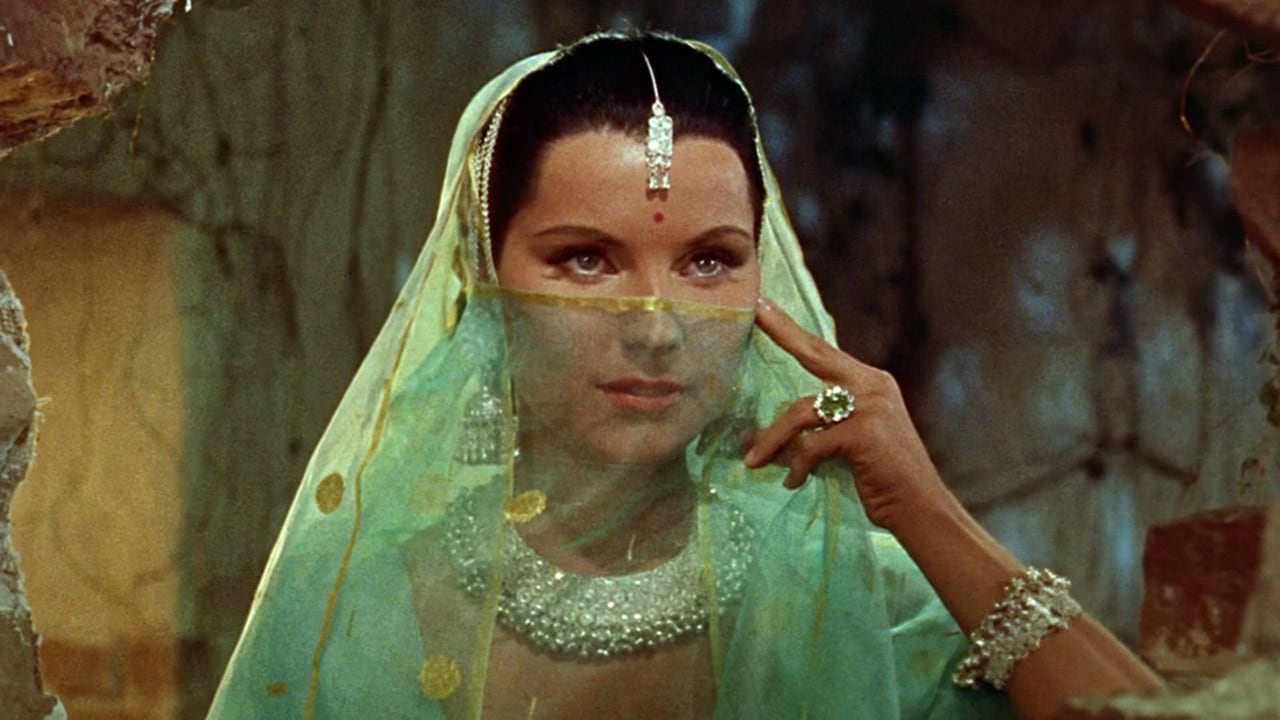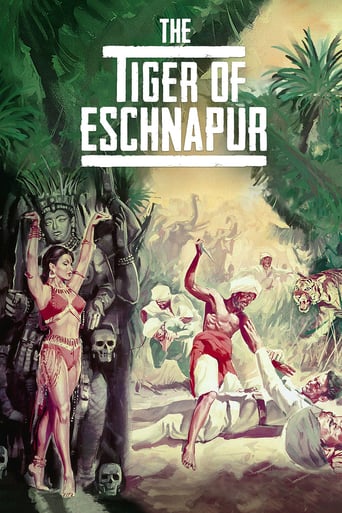

Amateur movie with Big budget
... View MoreA Major Disappointment
... View MoreIt’s fine. It's literally the definition of a fine movie. You’ve seen it before, you know every beat and outcome before the characters even do. Only question is how much escapism you’re looking for.
... View MoreIt is interesting even when nothing much happens, which is for most of its 3-hour running time. Read full review
... View MoreFritz Lang is one of those directors who managed the transition from silent film to sound film, even if most people will probably argue that his best works come from the days when there was still intertitles in films to tell us what the characters were saying. "Der Tiger von Eschnapur" is one of the last films of Lang and he was already in his late 60s when he made this one and it's actually a remake of a film that Lang already made considerably earlier in his career. This is also why Thea von Harbou, a couple years dead already by 1959, is listed as the writer. She also worked on the script of the original black-and-white films. This one here is in color and the first 100 minutes from a duology that continues with "Das indische Grabmal", another 1959 film. The cliffhanger ending also indicates this.I personally did not enjoy the watch too much. It starts off fairly solid, the characters are interesting, but sadly it does not stay this way for the entire film. I quickly lost interest in the story of an architect falling in love with a dancer, a woman that the local Maharajah also has an interest in. It's a tale about love, power and deceit, but it's nowhere near as good as it could have been. Looks like Lang already had his best days behind him and I cannot say I have a whole lot of interest in seeing the sequel, although I probably will soon and I hope it's actually 100 minutes that are improved to the 100 minutes we have here. As for the 1959 version of "The Tiger of Eschnapur", I do not recommend watching it unless you're a Lang completionist. It's not a failure, but also it's not a good film. Thumbs down. Oh yeah and a quick note about the cast. Do not be fooled by the characters in the film and the dark skin makeup because pretty much the entire cast is German. of course the clean speaking with no accents in this film also gives them away.
... View MoreAt the end of his career, Fritz Lang made two films in India: The Tiger of Eschnapur (1959) and its sequel, The Indian Tomb (also known as The Tomb of Love) starring Debra Paget, Paul Christian (billed as Paul Hubschmid), Walter Reyer, Claus Holm and Luciana Paluzzi. (In 1960, both movies were combined and edited down to a mere 94 minutes. The resultant hard-to-follow pastiche was then released as Journey to the Lost City). I thoroughly enjoyed The Tiger of Eschnapur. Admittedly, the plot is Boys Own Paper stuff, but on its juvenile level, it offers plenty of spectacular action – and typical Fritz Lang suspense – set against some truly magnificent backgrounds. And who could resist Debra Paget as she appears here, so lovingly photographed and so exotically attired? The only draw-back is that the movie ends like the chapter of a serial and you are then forced to view The Indian Tomb to see how it all comes out. I found this sequel a little tiresome, but many of my colleagues disagreed. To them, this chapter was even more exciting and colorful than The Tiger of Eschnapur. I would hazard that how you react depends to some extent on the interval of time involved. I watched the sequel straightaway. My colleagues viewed it at intervals varying from a week to six months. Both films are now available on excellent DVDs.
... View MoreI was wary of purchasing Fantoma's 2-Disc Set of "Fritz Lang's Indian Epic" after being somewhat let down by the 1921 Silent original (co-scripted by Lang himself) and also its less-than-stellar reputation. For this reason, when the second part of the saga turned up on Italian TV a couple of years ago, I decided to check it out just the same so as to get an inkling of what to expect! I recall thinking it pretty kitschy and unworthy of Lang's enormous talent, but Fantoma's sale (through their website) of their entire DVD catalog a few months back made it an irresistible acquisition! Well, having now watched the entire saga (with dialogue and in color, as opposed to the rather static Silent version directed by Joe May - although hearing the Indian-garbed characters talking in German took some getting used to), I was pleasantly surprised by how genuinely engaging and sheerly enjoyable it all was! Though it was sold as an epic production (to the point of concluding ESCHNAPUR with the promise that Part II would feature greater thrills and even more spectacle) at a time when such films were all the rage, the saga was actually a pretty modest undertaking by eclectic (and prolific) German producer Artur Brauner. Despite the two films' exotic, handsome look (not least in the provocative dances of Debra Paget), the budgetary constraints were painfully obvious in the special effects department, especially the hilarious appearance of a 'ropey' cobra which is intended to 'test' (the scantily-clad) Miss Paget's faithfulness to the Maharajah!! All in all, even if these films hardly constitute Lang's greatest work (though he harbored an evident affection throughout his life for this particular tale, which was originally conceived by his former wife Thea von Harbou), they have great - and enduring - appeal for aficionados of old-fashioned, serial-like adventure stories tinged with romance and mysticism.Even so, while I don't subscribe to that school of thought myself, there are some film critics (Tom Gunning, Jean Douchet and Pierre Rissient among them) who think very highly of Lang's Indian diptych - the first considering it one of Lang's towering achievements and the last two numbering it among the ten greatest films of all time!!
... View MoreDer Tiger von Eschnapur looks like a silent movie with dialogue. The settings are magnificent and the story telling comes close to Der Müde Tod. Unfortunately the characters will speak and that breaks the magic in it. Especially for the lead actor playing architect Harald Berger: he is awful and it's even worse with the dubbing in the French version. I wonder why Fritz Lang had to make do with him. Perhaps his eyesight was starting to decline. Perhaps he was just not able to shoot his great tragedies of the 20s with dialogue although he prided himself on being a good script doctor. Well, he had to adapt to the American Motion Picture Industry then his Art would be stemmed, obstructed.The pity is Fritz Lang never topped himself after his marvelous silent works of the 20s. Metropolis is overrated but despite all the wooden sentimentalism in it we have insights of the German director at his best. With M he gave us the best out of the silent era but he never again reach the magic of his previous work. While it took twenty years to Hitchcock to come to the masterpieces he shot in the 50s Lang did not improve his visual mastering. And worst of all the scripts he was handed in Hollywood hardly appealed to his deepest talent whereas he closely engaged in the making of Thea von Harbou's screenplays.
... View More